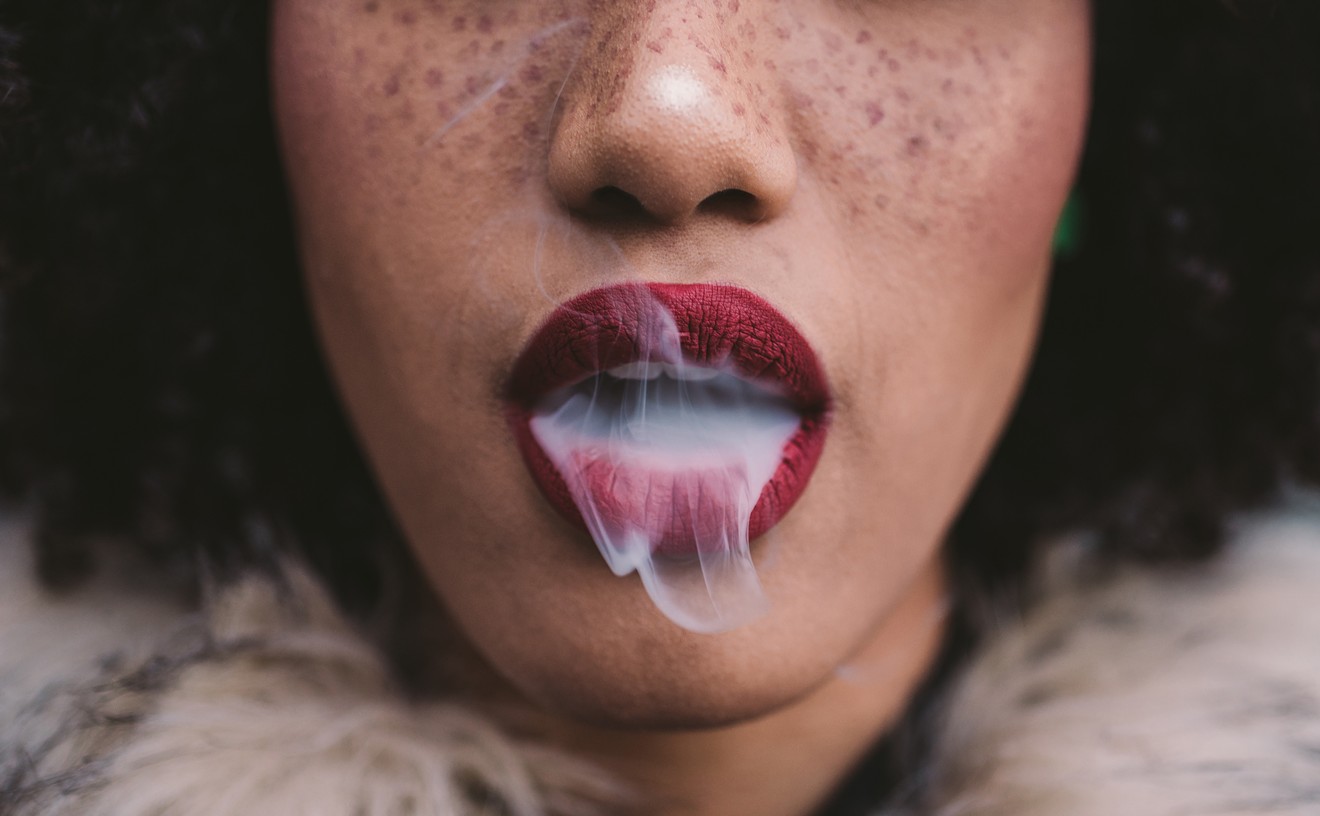Is she really as good as we all think she is? Granted, O'Keeffe's famous and beloved interpretations of irises and bleached bones and pea pods are so intrinsically erotic and feminine that even her own aggressive dismissal of the genital association seems moot. Art lovers admire O'Keeffe for the very meatiness and punch of such imagery, never mind the fact that her draftsmanship wasn't always stellar. Like Eric Fischl or David Salle, we dismiss the foundation weaknesses of O'Keeffe's works because we love the end result.
When I visited the O'Keeffe Museum in New Mexico a year ago, I was haunted by Hughes' posit. The endless canvases of monumental flowers and curving missions came off a bit hollow; they weren't as breathtaking as I had remembered them from my childhood; and as hermetically sealed testaments to modernism, they weren't as impressive as, say, the precisionism of Sheeler or the photographs of O'Keeffe's partner, Alfred Stieglitz. There was a disappointing flatness to the whole (yes, she went for Eastern-tinged flatness) that seemed unintentional -- simple organic poetry masquerading as masterpiece. The illusion shattered.
But now a retrospective of her paintings is at the Dallas Museum of Art in a show titled Georgia O'Keeffe: The Poetry of Things, which spans each of her visual phases from 1908 to 1963 (minus the 1920s paintings of New York architecture). The strength of the show is its discrimination: The selection of just 59 pieces from such a lengthy and prolific career is bound to yield the best of her canon. It's enough to restore a dubious viewer's faith in O'Keeffe's legacy and to forgive and forget the rash of clichés that came in her career wake. O'Keeffe's popularity peaked in the 1970s, when she was still alive and shacked up with a young buck of an assistant at Ghost Ranch and the country was fascinated with all things Southwestern. O'Keeffe's paintings were the perfect highbrow complement to the turquoise ring-dreamcatcher aesthetic. Not too cool in these castrated, irony-obsessed '90s.
And O'Keeffe was, no doubt, the epitome of an artist with an internal compass and a mythology: The New-York based painter saw New Mexico in 1917, fell for it, and settled there to capture it in oil. She was stubborn, a soulmate of an artist 20-plus years her senior, a woman who painted from her own erotic core despite the nation's puritanical leanings. She was a pioneer of a new kind of American landscape painting -- the pristine West as abstracted, fluid sexual partner. All the waxing ecstatic about the light being "different" around the Sangre de Christo range we can attribute to O'Keeffe; all the middle managers who snap under the pressure of the corporate rat race, sell their furniture and move to Santa Fe to become painters we can attribute to O'Keeffe. But those 59 impressive works at the DMA we can attribute to O'Keeffe as well, and it makes the '90s and Hughes and the weaker stuff at her museum in Santa Fe all disappear under the quiet nobility of her vision. ![]()
Christina Rees










